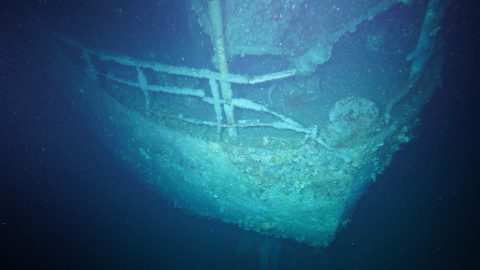Thursday, 16 May 2024
Menu

We will also outline in a few paragraphs the procedure to be followed by anyone intending to start using cylinders with the CE mark. Our considerations relate mainly to new cylinders, but also apply to cylinders which have already been tested in our country.
First of all, after purchasing a cylinder with the CE mark, if it does not have the UDT sticker indicating when the next technical inspection is due, it is advisable to go to the nearest UDT centre or centre which accepts cylinders for periodic technical inspection and have the cylinder registered. If the cylinder has been technically tested by the manufacturer within the EU, according to EU directives, the tests already carried out do not need to be repeated unless the country in which the cylinder is to be used has objections to the certification body which carried out the tests.
The following manufacturer’s documents will be required for registration:
1. instructions for use
2. declaration of conformity (including indication of cylinder material chemical composition) – examples of declarations of conformity can be found here.
The date of the first recommended next technical inspection after registration, is set out in the new law of December 2012, which sets the recommended service life of cylinders at the famous 2 years for diving apparatus and 5 years for breathing apparatus for land use – but most importantly and new – it allows other service life periods if the manufacturer’s service manual specifies other periods for the above-mentioned uses of cylinders authorised by this manual.
In simple terms, if the manufacturer’s instructions provide for the use of cylinders with the CE mark for diving or fire and rescue breathing systems, and the instructions indicate different periods of use between the tests for different applications, then these test periods are assumed when registering new cylinders.
They may therefore be more than 2 and 5 years respectively. Hence the need for such instructions when registering cylinders above. For longer periods of periodic inspection it is advisable to periodically check the condition of the cylinder – a quick check after removing the valve to assess the service history, especially if using unknown or unreliable filling points which may contribute to more rapid corrosion, oil contamination etc.
The next periodic inspection intervals following the registration of a new cylinder shall be indicated in the Instructions for Use, giving the standard to be used for the inspection.
An example of such an instruction with reference to the issues raised can be found here. It concerns steel cylinders produced by Vitkovice Cylinders, whose authorised distributor in Poland is FHU OPTIMAL-BIS from Rybnik.
Extracts from the new law in the section on CE marked cylinders for breathing systems:
Information on in-service testing (acceptance and periodic) of cylinders in breathing apparatus and fire extinguisher tanks and portable tanks in special equipment or which are special equipment.
According to § 1 (1) (e) of the Regulation of the Council of Ministers of 7 December 2012 on types of technical devices subject to technical supervision (Journal of Laws of 2012, item 1468), portable tanks are subject to technical supervision, such as:
Reservoirs (cylinders) for breathing apparatus,
Performance tests on cylinders for breathing apparatuses and fire extinguisher tanks and portable tanks for special appliances or equipment
Forms of technical supervision and periods of periodic inspection of the above portable tanks:
Reservoirs (cylinders) for breathing apparatus.
1.1 Steel, aluminium and composite cylinders for breathing apparatus for land use.
Form of technical supervision – full supervision.
Periodic inspection every 5 years, except that for cylinders CE marked, the dates shall be in accordance with the manufacturer’s instructions for use if the instructions state other dates.
1.2 Steel, aluminium and composite cylinders with steel liner in diving apparatus.
Form of technical supervision – full supervision.
Periodic inspection every 2 years, except that for cylinders CE marked, the dates shall be in accordance with the manufacturer’s operating instructions if the instructions state other dates.
1.3 Composite cylinders with or without aluminium liner in diving apparatus.
Form of technical supervision – full supervision.
Periodic inspection every 5 years, except that for cylinders CE marked, the dates shall be in accordance with the manufacturer’s instructions for use if the instructions state other dates.
1.4 Test dates for breathing apparatus cylinders are based on the requirements of the standards:
PN-EN 1968 :2002 “Gas cylinders – Periodic inspection and testing of seamless steel gas cylinders”,
PN-EN 1802 :2002 “Gas cylinders – Periodic inspection and testing of seamless aluminium alloy gas cylinders,
PN-EN 1803 :2002 “Gas cylinders – Periodic inspection and testing of welded carbon steel gas cylinders”,
PN-EN – ISO 11623 :2002 “Gas cylinders – Periodic inspection and testing of gas cylinders made of composites”.
The text of the new law § 1 (1) (e) of the Regulation of the Council of Ministers of 7 December 2012 can be viewed in full at www.udt.gov.pl
If the cylinder has the UDT mark, it can be used until the date shown on the UDT sticker.
The date of the next test shall also be indelibly marked on the cylinder, together with the mark of the certification body which carried out the tests. This date should match the date on the UDT sticker. The test should be accompanied by a copy of the test certificate which shows the cylinder’s capacity, working pressure and the medium for which the cylinder is approved, e.g. air, and the test expiry date etc.
To sum up:
An honest and reliable seller of pressure vessels who has not carried out the formalities for the registration and/or acceptance of the cylinders he sells should inform the buyer that the cylinders he sells are not authorised for use and the buyer must report the purchased cylinder to the UDT.
In order to save the buyer some stress and running from UDT to the seller, the seller should provide the buyer with the sales invoice of the cylinder, the certificate of conformity (it can be a collective certificate of conformity of the whole batch of cylinders with specified serial numbers and features, issued by the manufacturer) and the cylinder operating manual, or make them available in electronic form with the possibility to print them out, as these documents are required by UDT inspectors during cylinder examination before marking and accepting for use.
The purchaser of a new cylinder which does not have the UDT acceptance mark is obliged to hand over the cylinder and have it tested by the competent UDT before starting to use the cylinder. Each cylinder fitted with breathing apparatus should be accepted for use by the relevant UDT unit and bear the mark of the inspector of the Polish Technical Supervision Unit.
The text was written in cooperation with DEGAS Sp. Z.o.o . and FHU Optimal-BIS










Welcome to DIVERS24.COM, your daily source of scuba news, freediving, scuba diving information, and equipment reviews. Our comprehensive coverage of the dive industry from A to Z provides you with all the latest scuba news, training updates, underwater photography tips, and everything else related to scuba diving. Whether you’re a beginner or an experienced diver looking for more knowledge about scuba gear or techniques – we’ve got it covered! With our in-depth articles written by experienced divers who have been there and done that, you are sure to find exactly what you need here at Divers24.com. Dive into scuba news today!
Underwater Media Sp. z o.o.
Szafarnia 11/F8,
80-755 Gdansk, Poland
Welcome to DIVERS24.COM, your daily source of scuba news, freediving, and scuba diving information. Sign in for a weekly news update and discount coupons for dive gear and apparel.
@2023 - underwatermedia.pl. All Right Reserved. Designed and Developed by Tworzenie stron internetowych Gdansk

The Divers24 portal is currently the largest online medium treating diving in Poland. Since 2010 we have been providing interesting and important information from Poland and around the world on all forms of diving and related activities.
Contact us: info@divers24.com